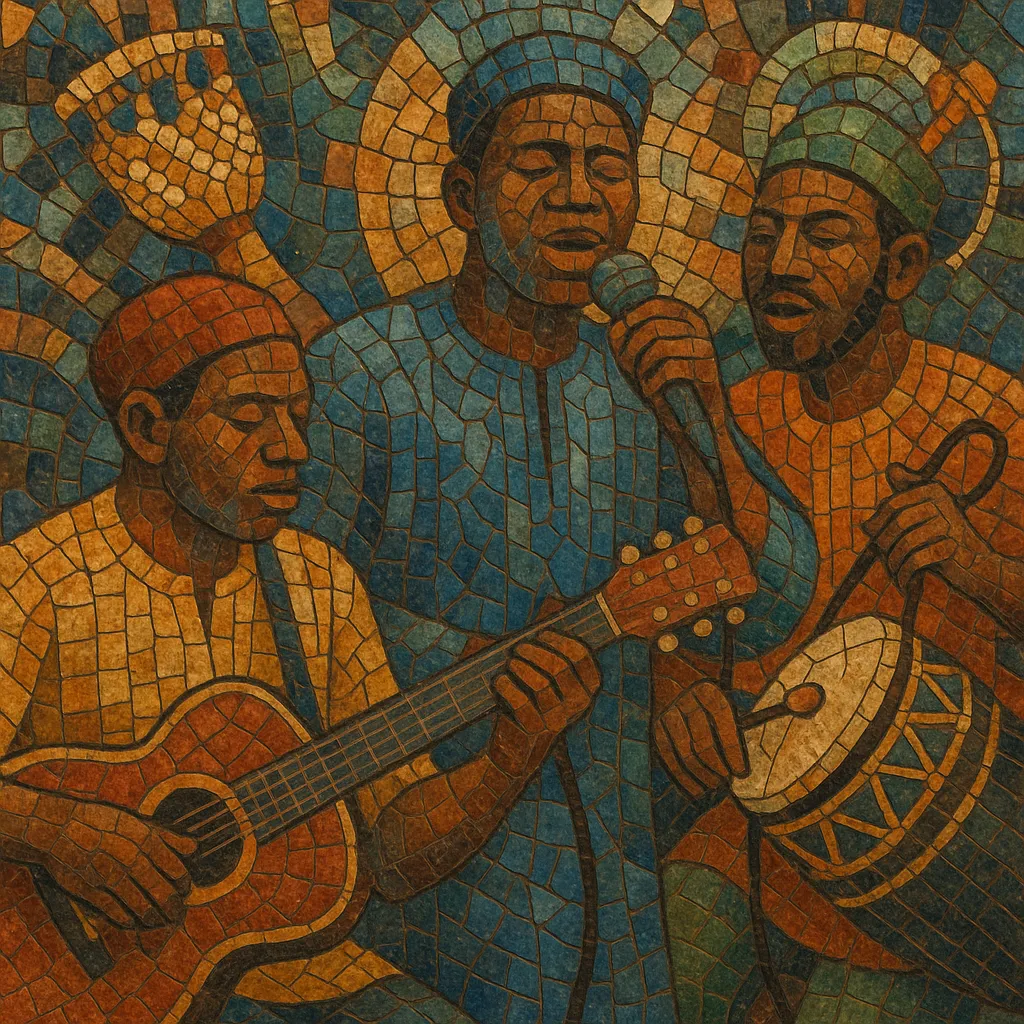Jùjú is a Yoruba-rooted popular music from southwestern Nigeria that blends indigenous percussion and call-and-response vocals with guitar-driven dance grooves.
It is characterized by interlocking electric and steel guitars, talking drums (dundun family), shekere shakers, and long, flowing performances built on cyclical vamps.
Often performed at weddings, ceremonies, and social gatherings, jùjú features praise-singing (oríkì), proverbial lyrics, and a warm, uplifting atmosphere that invites communal dancing.
Jùjú emerged in Lagos in the late 1920s as urban Yoruba musicians adapted palm‑wine guitar styles to local percussion and social occasions. Early bandleaders such as Tunde King popularized the term "jùjú" and set the template with guitar, tambourine, shekere, and early talking drums.
As Lagos expanded, bands amplified their sound. Ayinde Bakare helped introduce amplified/electric guitar to jùjú, while Tunde Nightingale refined a lighter, danceable style. I.K. Dairo modernized ensembles with accordion, multiple percussionists, call‑and‑response choruses, and the prominent use of talking drums. In 1963, Dairo received an MBE, reflecting the genre’s growing prestige.
The 1970s brought large, sophisticated bands led by Chief Commander Ebenezer Obey and King Sunny Adé. They layered interlocking rhythm and lead guitars, talking drum choirs, pedal steel and Hawaiian-style slides, and later synthesizers, creating expansive, hypnotic grooves. King Sunny Adé’s Island Records releases in the early 1980s (e.g., "Synchro System") brought international recognition and Grammy attention.
Sir Shina Peters fused jùjú with fuji and high‑energy dance aesthetics to coin "Afro‑juju," accelerating tempos and accentuating showmanship. Artists like Dele Abiodun, Segun Adewale, and Prince Adekunle explored funkier, pop-leaning variants while retaining Yoruba percussion and praise-singing.
While Afrobeats and hip hop dominate Nigerian pop, jùjú remains vital at social events and in the Yoruba cultural sphere. Its guitar textures, talking-drum vocabulary, and participatory song forms continue to inform modern Nigerian pop and world music, with legacy acts and new bands keeping the tradition alive on stage and in long-form live recordings.


